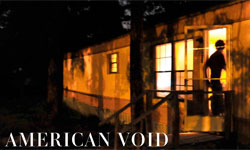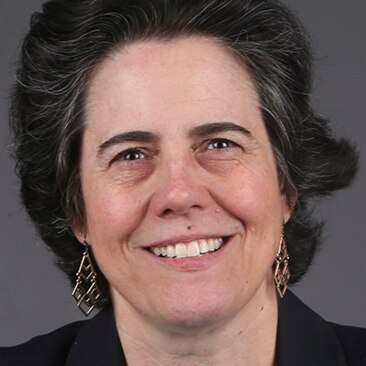Coaches’ corner
Once upon a time, there were writing coaches in newsrooms across the country, and then, there weren’t. In this new monthly feature, we hope to help writers and editors by sharing advice about storytelling and enterprise.
—————————————–
The story: An American void, by Stephanie McCrummen
From: The Washington Post
When it ran: Sept. 12, 2015
Questions: Maria Carrillo, enterprise editor, Houston Chronicle
Answers: David Finkel, national enterprise editor, The Washington Post
What inspired the story, and time from idea to publication:
Soon after the Charleston church shootings, Stephanie and I were watching some news reports that included Joey Meek talking about his relationship with Dylann Roof as he stood outside of his trailer. What he said, how he seemed, where he was – all of it led to one question we both had, which was the inspiration for the story: What goes on inside that trailer?
The answer, of course, came through reporting, but a particular kind of reporting that Stephanie did. She didn’t interview by phone, which may be good for background material but doesn’t exactly make for a textured foreground. She didn’t interview by e-mail, which just strikes me as the strangest form of interviewing. She didn’t interview by roaming around Twitter and finding tweets to stack, and why in the world would any reporter want to do that anyway? Instead, she went somewhere and knocked on a door and when the door was opened went inside, and then she kept going back to that door for as long as it took because the only constraint on her was a budgetary one, to please find a hotel where you make your own waffles and park your own car.
Two weeks later, she was back in the newsroom. A couple of weeks after that, we had a story to publish, and then there it was, huge on the front page of The Washington Post and also dominant on the homepage, where the readership metrics were astonishing. Really, there are so many things I admire about this oddball story, all of which flow out of the best thing of all – Stephanie was curious about something, reported deeply for an answer, and wrote a great piece in which each sentence was interesting enough to make you want to read the next one.
The introductory section ends with the question: What kind of people would do nothing? But the story has a matter-of-fact quality to it and generally avoids making judgments. I wondered if there were any conclusions you hoped readers would come to in answering that question?
Hmm. We thought long and hard about how that line should read and went through several versions – Who does nothing? Who would do nothing? What type of people would do nothing? etc. – before settling on the one we published, which we thought did the best at not implying judgment. That’s something I’m always asking my reporters to keep in mind, by the way, not that they need to hear it: don’t excuse, don’t vilify, don’t judge. Sometimes, I’ll even uncork an old Hemingway line, which I’m sure makes them want to roll their eyes in the same way I would if an editor said it to me: The writer’s job is not to judge but to seek to understand. I mention this because it leads into your question. I don’t think we hoped for any conclusion in particular. We report. We write. We evoke. We explain. And yes, we frame – thus the phrase “an America void where little is sacred and little is profane” and the two questions at the end of the first section. But we don’t insist, especially on something such as a conclusion, because conclusions are the job of a reader.
This family is obviously not savvy about the media and was thrust into the spotlight. Does that enter your mind when you are editing stories like this? Do you feel protective of them at all?
Protective? No. In the context of journalism, something about that word feels a little patronizing. That’s not to say we don’t try to be sensitive. Of course we do. Take this graf, for example:
He is 15, and wears long-sleeved T-shirts that flop over his hands, a habit developed in middle school, when he used to cut himself. He says he stopped doing that when Joey found out, held a knife to his arm and said, “You want to do it? Do it right. Let’s cut it open, let’s see your bone.” He wears a wristband that says “FEEL,” and he is pacing around the living room when Lindsey …
Originally, there was more about a 15-year-old’s troubled background, but we cut it out because it seemed unnecessary. The point was made by what we included, and including more could come across as piling on. Is that being protective? I don’t think so. I think it’s being appropriate.
It is never clear to me whether this family shares any of Roof’s racial animus. I guess we might assume by their black neighbor’s visit that no one there does. But did you consider addressing that more directly?
We would have addressed race more specifically if race had come up more organically. In Stephanie’s two weeks there, though, it rarely came up at all, and we didn’t want it to come up because we were bringing it up. So while it would have been wrong to ignore race, it also would have been wrong to overemphasize it. Just because there’s a history of racial animus outside of a trailer doesn’t mean it’s necessarily inside the trailer, so Stephanie decided to use race in service of a more relevant point in understanding the Meek family, which you’ll see in the third and fourth paragraphs of the second section:
“Who’s here?” Jacob says, jumping up and peeking through the blinds, but the view is the same as ever — no people, an abandoned trailer next door, a skinny pine tree and some empty vodka minis in a patch of weedy grass. Beyond is the whoosh of highway traffic and the rest of Lexington County, a place that is roughly 80 percent white, the result of decades of white flight from neighboring counties and Ku Klux Klan activity, including a drive-by shooting of three black teenagers in 1996 — not that any sense of history filters into the trailer. “The KKK, that’s one thing I don’t understand,” as Joey says. “Was the KKK an actual violent thing?”
There are no books here, no magazines, and the wood-paneled walls are bare. A stained blue towel hangs over the window in the door. The only furniture in the living room is the couch, two side tables and a metal stool positioned in front of the TV, which is wired to two large speakers and the Xbox that one of the Meek brothers is always playing.
There are several drawn-out scenes. Was that “let the camera roll” effect planned or did it evolve organically? And when you’re editing scenes like that, what cues do you look for to decide if something is going on for too long?
Yes it was planned because that’s how you do immersion journalism, by quietly seeing rather than constantly asking and by using silence as a reporting tool.
But I need to expand on that a little because a let-the-camera-roll effect has a lot more to it than just letting a camera roll. One of the biggest challenges for Stephanie was to write a story about people who not only were doing very little but who turned out not to have a lot of insight into the little they were doing. There was no classic narrative line to follow. No evolving action. No journey, external or intellectual, from point A to point B. One day in that trailer was pretty much like the others, and to me, that’s one of the great achievements of the piece because if you read it critically, you’ll see that a lack of action doesn’t mean there can’t be a deliberate progression from the first line to the last. There is a progression, absolutely, section by section, in focus and tone so that one section doesn’t just bleed into the next in a way that feels repetitious. There are long scenes. There are short scenes. Various people come to the forefront and recede. For a story with no movement, there’s an incredible amount of movement, not because of a rolling camera but because of a writer who uses that effect in the controlled telling of a story that has a beginning, a middle, and an end.
As for what cues I look for to suggest something is going on too long? Easiest one: boredom. If I find myself suddenly bored, that’s the cue to figure out why that happened and to solve it.
One of the hardest things to avoid is the inclination to cast people in stark terms, as either good or bad, and embracing the contradictions in their words and actions. Kim, for instance, seems caring and aloof. Do you encourage your writers to embrace ambiguity?
My writers are great, and much of their greatness comes from knowing, without my encouragement, what to embrace in their stories and what to avoid.
A partial list:
- Ambiguity? Embrace.
- Simplicity? Avoid.
- Quotes such as, “You like lake water”? Embrace.
- Mentions of Care Bears? Avoid.
More Coaches Corners:








